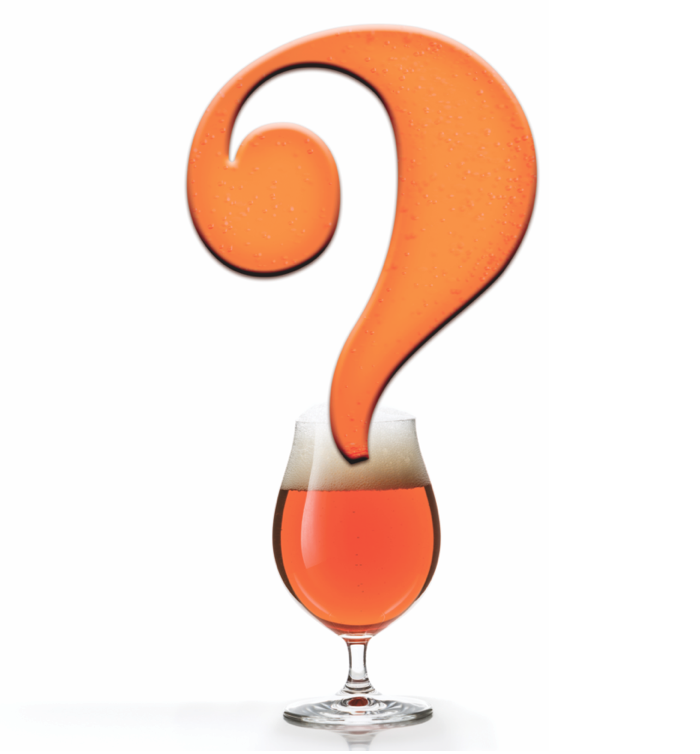Storing Kegs
Q: I’m looking to enter a few of my homebrews into a festival and I’m unsure about how far ahead of time I can keg. I’m still a little new to kegging so here are my questions: How do I keep the carbonation without over-carbonating? Do I leave it hooked up to the gas until I’m ready to serve it? What should pressure be set at if I have to leave it hooked up? Does it have to be kept cold?
— Michael Aughinbaugh • Hanover, Pennsylvania
A: Kegging in a simplistic sense is not much different than bottling. The biggest differences between a keg and a bottle are the size of the container and how the beer is removed from the container.
The thing that helps the most at home to ward off oxygen is to take advantage of being small with few batches to deal with. At home it’s easy to fill a clean keg with water, push it out with carbon dioxide and rack beer into an environment that is virtually oxygen-free. This one thing really helps address oxidation.
The next step is handling carbonation. Whether you keg condition or force carbonate, you begin the process in the keg. If you keg condition you want to add priming sugar, and perhaps yeast, prior to keg filling. If you force carbonate, no preparation before kegging is required. Suffice to say, at the end of the carbonation process you have a keg of carbonated beer.
If you are planning on force carbonating the beer, you need to be aware that the pressure which you apply the CO2 via the regulator is dependent on two factors. The first factor is what temperature the beer is being stored in. The second factor is the carbonation level you plan for your beer. So let’s take a look at these two factors.
One of the basic laws of chemistry is Henry’s Law. The basics of Henry’s Law state that the solubility of a gas in a liquid is dependent upon the temperature, the pressure of the gas over the liquid, and the nature of the gas and liquid. Carbon dioxide increases in solubility in water as the temperature decreases, as do most gases. So the colder the beer is kept, the less pressure is required to “push” carbon dioxide into the beer.
Next you need to determine the final desired carbonation level of the beer when serving. Often times homebrewers will reference guidelines based upon the style of beer they are serving. While a standard for most of the craft brew world might be serving beer at about 2.5 volumes of CO2, that often changes. Bavarian hefeweizens often will be served at 3 volumes of CO2, Belgian tripels may contain over 3.5 volumes of CO2, while a British ESB may only contain 1.8 volumes. Determine how much carbonation you want your beer to contain, but be aware that you may need to increase the length of the serving lines of the beer to handle highly carbonated beers. Balancing draft lines is a whole other question (read more about balancing draft lines in the January-February 2006 issue).
You can find carbonation charts to help guide you on where appropriate carbonation levels may fall for different beer styles through a simple search on the Internet. But let’s take an example. Say you brewed an American pale ale and are looking for a carbonation level of 2.4 volumes of CO2. If you are planning on force carbonating the beer up near room temperature, say 65 °F (18 °C), then you would need to set your regulator to 29 psi to achieve that level of carbonation.
An important thing to keep in mind is that once the carbonation is balanced, then it is balanced. You can leave the CO2 on at 12 psi at 40 °F (4 °C) for two years and still have 2.5 volumes of CO2 in your beer. Because the pressure of the CO2 in the beer equals the pressure of CO2 in the headspace above the beer. When dropping the temperature of the beer from 40 °F (4 °C) down to 32 °F (0 °C) without changing the regulator from 12 psi, you will effectively change the carbonation level from 2.5 volumes of CO2 in the beer to 2.9 volumes of CO2. So if you plan on leaving the gas hooked up until you are ready to serve, be sure not to change the temperature of the beer. If you need to place the keg in a warm or cold environment, simply remove the gas line of the already balanced beer and you will not cause an unbalance.
And what should happen next to prolong the life of your keg of homebrewed perfection? Well, that depends.
Assuming this beer is not keg-conditioned and was relatively clear and ready to drink (minus carbonation) prior to kegging, the best thing to do with your beer is store it cold prior to tapping. Just like well-crafted beer from a brewery without a pasteurizer, your kegs of homebrew can last for months before tapping.
If the beer is keg-conditioned you need to hold the keg warm just like bottle conditioned beer to allow for package carbonation/conditioning to occur. And if the beer can benefit from further conditioning, you may want to store the beer cool, but not cold. View your keg just like a bottle. If the bottle is the type of beer that will improve with cool (not cold) storage, do the same with the keg.
Whatever you do, avoid the temptation to pull samples from your keg and disrupt the balance of things. This can be done without causing problems . . . but . . . you stated that you are new to kegging and are stockpiling beer for a special occasion.
There are several factors influencing shelf life, so I will give some sweeping generalizations to shed a thick fog over this weighty topic! Beer that is filled in such a way to minimize oxygen pick-up and stored cold will taste pretty darn good for 120 days without any major issues. But if this beer has microbiological issues all bets are off. Contaminated beer can develop off-flavors even when stored cold, so this introduces a big wild card into things.
The other major issue is oxygen pick-up during packaging and other steps in the process where beer is moved from one container to another or when oxygen can be introduced, such as dry hopping. Packaging is the main concern for oxygen pick-up. The old adage “easier said than done” is alive and well when packaging beer in kegs, cans, and bottles.



